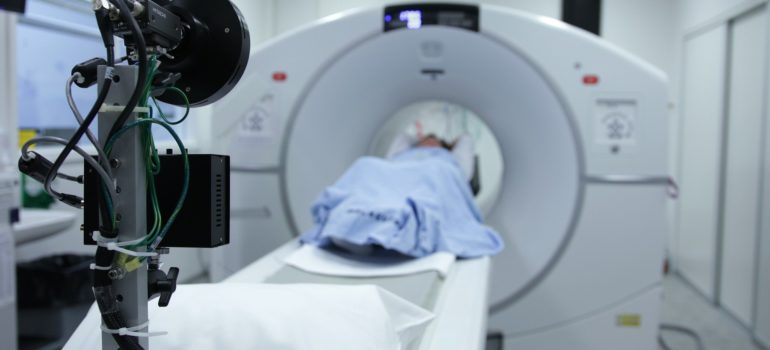
Radiation Safety: What Women Should Know
Categories: blog
March is Women’s History Month, and its purpose is to highlight and celebrate the contributions of women to history and society. The concept of celebrating the role of women in the building of our nation originally started in 1978 in Sonoma County, CA as Women’s History Week. Two years later, in 1980, then President Jimmy Carter issued a Presidential Proclamation declaring the week of March 8th, 1980 as National Women’s History Week. The week eventually became a month in 1987 when congress passed a Joint Resolution to declare the month of March as Women’s History Month in the United States. Women’s History Month is now recognized internationally.
As March is designated as a month to focus on important roles of women in our society, it seems appropriate to focus on a woman’s healthcare topic – particularly radiation safety for women. It has long been known that imaging tests designed to help doctors identify disease or damage to the body had the unwanted side effect of increased cancer risk to both men and women. This is attributed to the use of ionizing radiation in many forms of diagnostic imaging performed today, such as mammography, CT scans and nuclear imaging.
The benefits of ionizing radiation are well documented. This type of radiation produces long wavelength energy that penetrates the body’s tissues to clearly reveal internal organs. This type of clarity eliminates the need for exploratory surgeries and other invasive procedures which can be risky. The ability for a physician to get the information he needs without having to perform surgery far outweighs the risks that an x-ray or CT scan present.
These types of imaging tests have become so effective, that according to the latest results from iData Research – a healthcare consulting and market research firm for the medical device and pharmaceutical industries – over 75 million CT scans are performed each year in the United States. This number is forecasted to grow to reach 84 million procedures by 2022.
This presents particular concerns for women who often have ionizing radiation procedures performed as part of their normal medical health screenings for conditions such as breast cancer or as a component of their pregnancy health monitoring.
In the case of breast cancer screening, the good news is that data indicates that mammograms performed after the age of 30 show no apparent link to breast cancer as a result of the mammogram, and most regular screening for breast cancer does not begin until after that age.
In the case of pregnancy, if you suspect you may be pregnant and a CT scan, x-ray or nuclear imaging test is being planned for any reason, it is important that you let your physician know. This will allow your doctor to make informed decisions and select the most appropriate imaging exam that will minimize your exposure to radiation while still providing the information needed. The possibility of an x-ray causing harm to your unborn child is very small. Most x-ray exams — including those of the legs, head, teeth or chest — won’t expose your reproductive organs to the direct X-ray beam, and a lead apron can be worn to provide protection from radiation scatter.
If you are already pregnant, some commonly performed tests such as ultrasounds and MRI’s use non-ionizing forms of radiation that are very different from the ionizing radiation used in CT scans and x-rays. For this reason, ultrasounds have become a common method to monitor the fetus during the course of a pregnancy.
In general, there are some commonsense steps that women can take to ensure they are protecting themselves from overexposure to radiation without impacting the level of care they are receiving:
- Keep track of your history – this includes x-rays, CT scans, mammography and any nuclear tests. This information will help your physician make informed decisions about what types of tests will be safe for you or if alternate, lower radiation dose tests may be sufficient.
- Consider less frequent tests – if you are getting regular CT scans for a chronic condition, ask your physician if it possible to increase the time between scans.
- Do not get unnecessary scans – this may sound obvious, but many facilities market their services as providing a more thorough checkup than you can receive from your doctor. If that “thorough checkup” includes additional CT scans or x-rays, you will have to decide if the risk is work the benefit of the additional radiation exposure.
Bluestone Diagnostics, Inc. has over twenty years of experience in selling and renting refurbished diagnostic imaging equipment, including mobile c-arms, mini c-arms, digital portable x-ray systems, ultrasound systems, CT scanners, mammography systems and other modalities. That experience includes a hands-on, consultative approach that will enable you to evaluate your equipment needs so you can make an informed decision. Contact us at (877) 904-1904 so we can help you determine your best options.
